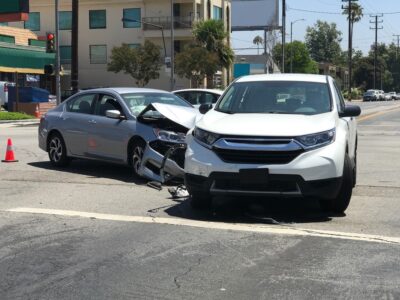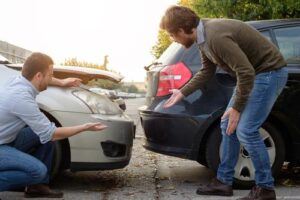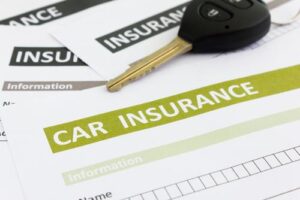
Automobile accidents often occur at busy intersections. Rollover accidents, T-bone collisions, and sideswipe crashes are some of the types of car accidents that frequently occur at intersections. Many accident victims want to know which party is at fault in an intersection accident.
The Two Most Common Types of Intersection Accidents in Georgia
Atlanta is the largest metropolitan area in the State of Georgia. Thousands of commuters travel into and out of the city every day. The two main types of intersections in Atlanta and surrounding cities are signalized intersections and unsignaled intersections.
At signalized intersections, electronic mechanisms promote the stable movement of traffic; stop signs without electronic signaling can make congested streets and intersections more common. Unsignalized intersections do not contain electronic signals. Lane design and road segments can both have an effect on the number of traffic incidents that occur at unsignaled intersections.
Get the strong arm
The Most Common Types of Intersection Collisions in the State of Georgia
Intersection accidents can be catastrophic due to the high rate of speed at which motorists travel through intersections. The following are some of the most common car accidents that take place at intersections in Georgia:
- Hit-and-run Accidents: Unfortunately, some drivers that cause automobile accidents flee the accident scene before law enforcement officers or medical personnel can arrive. However, you may be able to file an uninsured or underinsured motorist claim if you suffer injuries during a hit-and-run accident.
- Sidewalk Accidents: Incidents involving pedestrians often occur at busy intersections in large cities such as Atlanta and Macon. Pedestrians can suffer serious bodily injury or death during sidewalk accidents.
- Rear-End Accidents: Rear-end accidents typically occur at intersections when a driver applies their brakes, and the motorist behind them does not have time to come to a complete stop. Injured victims who suffer injuries during rear-end accidents may experience whiplash, spinal cord injuries, and bone fractures.
- Frontal Collisions: Frontal collisions are common at intersections due to the many drivers who run stop signs and red lights. These accidents can cause extensive property damage, serious bodily injury, and death.
- Sideswipe Accidents: Sideswipe accidents often occur when a motorist changes lanes suddenly near an intersection. It can be beneficial if a camera recorded the sideswipe accident at the intersection.
- T-Bone Accidents: T-bone accidents are often catastrophic events that cause serious bodily injury or death. During T-bone accidents, one automobile strikes another from the side; sometimes airbags are not deployed by the automobile that is hit on the side.
This is not an exhaustive list of the types of automobile accidents that occur at intersections in Georgia. Any type of automobile accident that takes place at an intersection can cause serious bodily injury or death. If you suffered injuries during an automobile accident at an intersection, then you can seek financial compensation for your injuries.
Common Causes of Automobile Accidents at Intersections
Two of the most common causes of automobile accidents at intersections are driver error and dangerous road conditions. However, the following are also common causes of automobile accidents at intersections:
- Fatigued driving
- Intoxicated driving
- Driving at an excessive rate of speed
- Texting while driving
- Distracted driving
Poor road conditions can arise suddenly and unexpectedly. Potholes, flooding, and road construction can all make automobile accidents at intersections more likely to occur. Fatigued driving and distracted driving contribute to intersection accidents because drivers often drive through intersections when they are texting or falling asleep at the wheel; being aware of these common causes of intersection accidents can help you look out for dangerous drivers.
Establishing Liability in Intersection Accidents
Georgia adheres to a theory of modified comparative negligence. During a traffic collision, the parties will be assessed for their respective degrees of fault. Sometimes one driver is 100% at fault for the accident.
However, under some circumstances, each driver will be apportioned as part of the total liability. For example, one driver may be 40% liable and the other driver may be 60% liable. In Georgia, you can recover financial compensation for your injuries if you are 49% or less liable for the accident, but if you are 50% or more liable for the accident, then you will not be permitted to recover monetary compensation for your injuries.
The Benefits of Retaining a Personal Injury Lawyer
A personal injury lawyer can help you investigate the conditions that gave rise to the automobile accident in which you suffered injuries. Also, an attorney can help you gather the evidence you will need to substantiate your legal claims. You will need medical bills, medical records, traffic collision reports, and witness statements to meet the burden of proof in your case.
In civil lawsuits, the party bringing the lawsuit is referred to as the plaintiff, and the plaintiff has the burden of proof. In civil cases, the burden of proof is the preponderance of the evidence standard. This typically refers to 50% or greater. In some civil cases, the burden of proof is clear and convincing evidence.
In criminal cases, the burden of proof is beyond a reasonable doubt, and this is the highest standard of all. However, this standard does not apply in civil cases.
Contact John Foy & Associates Today to Schedule a Free Consultation
Contact John Foy & Associates today if you suffered injuries during an intersection accident. We have decades of experience representing clients in car accident cases in the State of Georgia. You may feel stressed about medical bills, lost wages, and physical rehabilitation.
Retaining a personal injury lawyer can help relieve some of the stress caused by the aftermath of an automobile accident. Reach out to John Foy & Associates today to schedule a free consultation.
404-400-4000 or complete a Free Case Evaluation form





